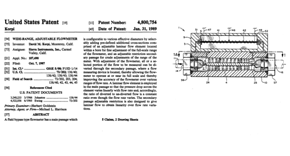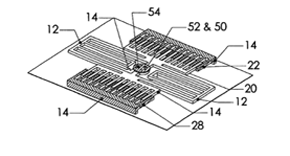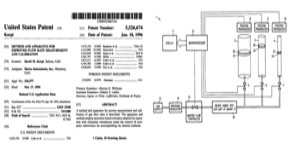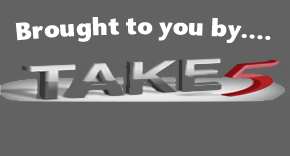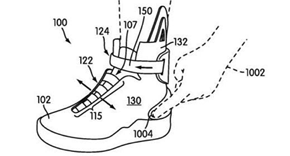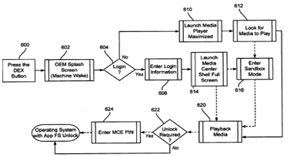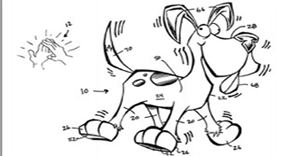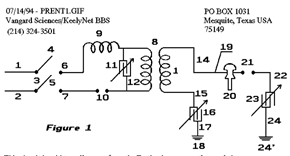Provisional Patent Application America Invents Act Explained
The America Invents Act (also referred to as the “Patent Reform Act of 2011”) was enacted September 16, 2011. Provisional Patent Application America Invents Act Explained below!
For folks interested in filing a Provisional Patent Application the filing fee went from $110 to $125 on Sept 26, 2011 and the promised micro entity fees of $62.50 may not be available until 2013 but we never know..
What this ALSO means to the individual inventor, or self-inventor, is that the “path” for you to get U.S. Patent protection of your inventive idea is to be the first to FILE your patent application or provisional patent application. Gone, on Sept 16, 2013, will be the days of keeping records or inventor’s notebooks to prove you were the first to invent. The new law will be that the first person to file will be the “owner” of the inventive idea and have the right to pursue patent protection.
This change creates more of a race to the U.S. Patent Office by granting rights to the first person to file regardless of who may have first conceived the invention. So, the lesson is, for you self inventors, is at least get a Provisional Patent Application filed TODAY! It only costs $125 to file it!
Micro Entities Special Pricing…
To qualify as a Micro Entity, the filer must be a Small Entity (less than 500 employees, non-profit, education and the like) and must meet the following criteria:
At this time, the USPTO may not offer the micro entity discount of 75 percent on any fees. As provided for in the America Invents Act (Public Law 112-29), these fees will be adjusted under the fee setting authority provided for in Section 10 of the America Invents Act. The act continues to provide a small entity discount of 50 percent under 35U.S.C. § 41(h)(1).
Once the USPTO sets these new fees, it is anticipated that the new fees will include a 50 percent reduction for small entities and a 75 percent reduction for micro entities for filing, searching, examining, issuing, appealing, and maintaining patent applications and patents. Applicants qualifying for a small entity discount of 50 percent will be those who meet the current definition in 35 U.S.C. 41(h)(1) while applicants qualifying for a micro entity discount of 75 percent will be those who meet the definition outlined in the America Invents Act Section 11(g).
What this ALSO means is as an individual inventor you have an EXTRAORDINARY opportunity to level the playing field with the “Big Buys” using the provisional patent application process. This process allows you to file your provisional patent application and within milliseconds of hitting “Confirm” you will have the ability to put “Patent Pending” on your product and have a level of safety when showing your inventive idea to potential partners for licensing or sale or partnering.
When you file online with the USPTO the Provisional Patent Application only costs $125 to get this extraordinary path of IP protection. The difficult part is wading through the filing process which is where you will want to spend a small amount of money to look at courses like the provisional patent video course at least so that you will be prepared to file it yourself or to give your patent attorney everything they need to file your application for you.
Also, it is important to note that the USPTO will charge extra if you do NOT file any applications electronically. The new fee will be called the Luddite Penalty, named after the Luddites who dislike new technology! Gotta LOVE that the USPTO uses this term from the 1812′s when “Luddites” came to break the new wide frame stocking machines for knitting in protest to falling wages and unemployment because of the new technology! They should call the Provisional Patent Video Course a “Luddite Penalty Cure” because it makes the complicated USPTO filing technology and methods easy to understand for anyone!
Inventors Notebooks? Still Need them??
Provisional Patent Application America Invents Act Explained and below are the most important proposed changes to patent law.
Changes That Takes Place Immediately (Upon Enactment in Sept 16 2011)
- Tougher to obtain inter partes re-exam. It will be harder to obtain patent re-examination. (The Director can only authorize a re-exam if “there is a reasonable likelihood that the petitioner would prevail with respect to at least 1 of the claims challenged in the petition.”) And there will be no more federal court review of USPTO re-examinations. (Sec. 6).
- Easier for prior users to defend. If you’re sued for infringement but you were commercially using the patented technology more than one year before the filing date of the claimed invention, you have a defense against a claim that you infringed (although that defense doesn’t invalidate the patent). The Act includes a definition of “commercial use.” (Sec. 5).
- Goodbye to tax strategy patents. The USPTO will stop granting patents for strategies for reducing, avoiding, or deferring tax liability.
- Goodbye best mode defense. Accused patent infringers often use the “best mode defense” in which they argue that the patent holder failed to disclose the best mode of carrying out the invention. The best mode defense will no longer be available in cases filed afterenactment. (Sec. 15);
- Hello virtual website marking. Virtual marking—the process of using a publicly accessible website to provide a link between a patented invention and its patent number—shall be considered as sufficiently providing public notice for that patent. This change will apply to all cases filed including cases pending at the time of enactment. (Sec. 16).
- Harder to go after false markers. It has become common practice for parties to bring a lawsuit claiming (or making a counter claim) that an invention is falsely marked, especially if the mark exists on copies of the invention after the patent has expired. The Act provides that privately filed false marking claims (those claims not brought by the government) will require proof of competitive injury. Marking with the number of a patent that covered that product but has expired will no longer be considered false marking. This provision will apply to all cases filed including cases pending at the time of enactment. (Sec. 16(b)).
- New rules when joining defendants. Joinder of unrelated accused infringers will be limited in actions commenced on and after enactment (Sec. 19(d)), and
- No patenting humans. Issuance of patent claims directed to or encompassing a human organism will be barred as of enactment. (Sec. 33).
10 Days after Enactment Sept 26, 2011
- Higher fees. Patent filers will pay a 15% surcharge on all patent fees. (Sec. 11).
- Paying for being prioritized. There’s a $4,800 fee for filing a prioritized application. Small entities pay only $2,400. (Sec. 11(h)).
60 Days after Enactment October 16, 2011
- The Luddite penalty. A new $400 fee ($200 for small entities) must be paid by those applicants who do not file utility patent applications electronically. (Sec. 10(b)).
12 Months after Enactment Sept 16, 2012
- The Inventor’s Oath/Assignment. The Act modifies certain requirements regarding the oath or declaration required of an inventor. If an inventor has assigned (or is obligated to assign) an invention, the assignee can file the application for the patent. (Sec. 4).
- Narrows post-grant reviews. The Act provides that inter-partes hearings after a patent has been issued are now limited to challenges for novelty and nonobviousness—that is to issues relating to Sections 102 and 103 of the patent law. Such claims can only be based on prior art consisting of patents and printed publications and must be filed 9 months after the patent issued. This provision also establishes many additional technical and procedural rules for post-grant reviews, generally making it more difficult to bring post-grant reviews. For example, it prohibits a post-grant review and inter partes review if the party filing has filed a related civil action before filing the petition. (Sec. 6).
- Changes to Patent Trial and Appeal Board. The Act sets forth new rules about the Board and provides for appeals to the Court of Appeals for the Federal Circuit (CAFC) from certain Board decisions. (Sec. 7)
- Submitting “Gotcha” documentation. Prior to the USPTO’s granting of a patent, the Act allows a third party to submit relevant publications for the patent examiner to consider (commonly referred to as preissuance submissions). (Sec. 8).
- Patent owner’s right to supplemental exam. The Act establishes a system of supplemental examinations for a patent owner “to consider, reconsider, and correct information believed to be relevant to the patent.” (Sec. 12)
- A new look at business patents. The Act requires the Director to establish a transitional post-grant review proceeding to consider the validity of business-method patents. (Sec. 18)
18 Months after Enactment March 16, 2013..
- First to file; not first to invent. Patents filed 18 months after enactment will be subject to new first-to-file and prior art rules, effectively ending centuries of first-to-invent rules. The current one-year on sale bar—that permits sale or disclosure of the claimed invention less than one year before filing—is terminated, although the Act establishes a limited one-year grace period if the inventor (or anyone who obtained the subject matter from the inventor) made certain disclosures of the claimed invention. The novelty and non obviousness sections of the patent law (Sections 102 and 103) are amended and existing provisions relating to inventions made abroad and statutory invention registration are terminated. (Sec. 3).
- New rules for fighting earlier effective patent filing. The Act permits a patent owner to bring a “derivation hearing” at the USPTO (replacing interference proceedings) against another patent owner claiming to have the same invention and who has an earlier effective filing date. The derivation hearing must be filed within a 1-year period beginning on the date of the first publication of a claim in the earlier filed application. Alternatively, the owner of a patent may sue the owner of another patent that claims the same invention and has an earlier effective filing date. These lawsuits can only be brought if the invention claiming priority was derived directly from the person seeking relief. (Sec. 3).

